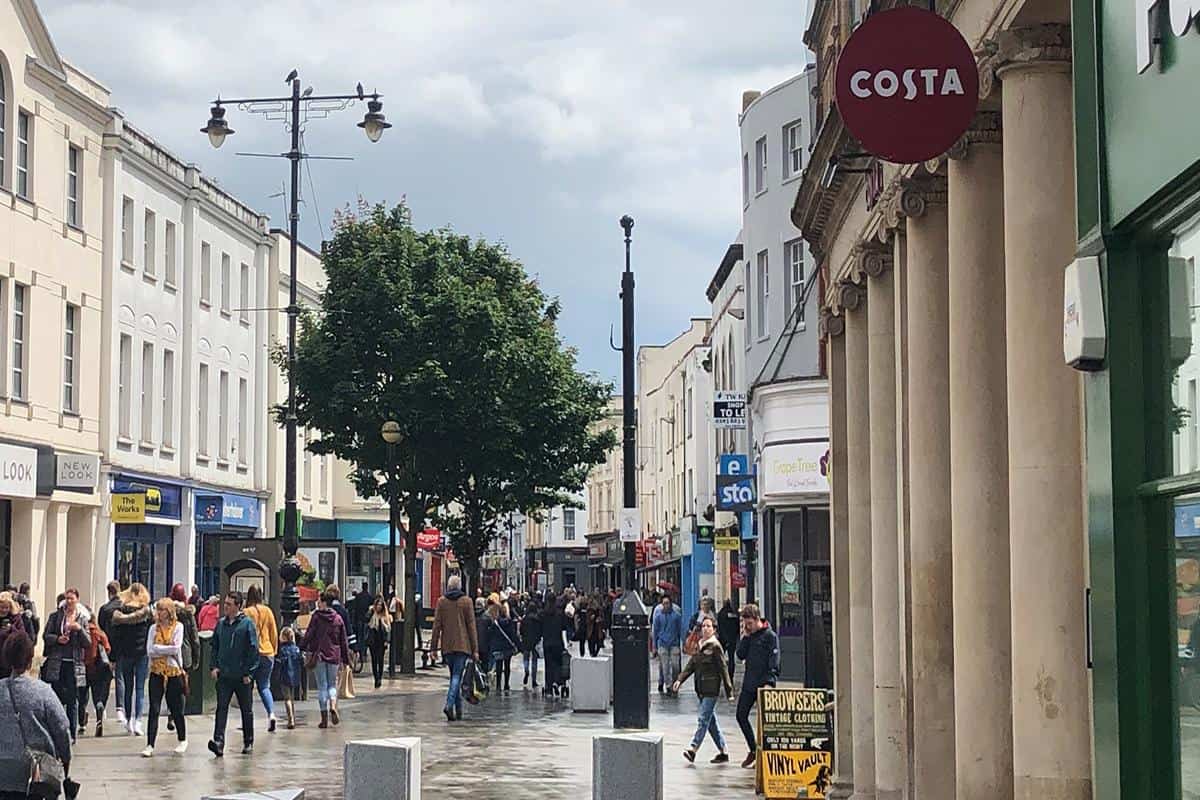More shoppers visited UK stores in February than a year earlier, although numbers were both lower than the previous month, likely following the end of post-Christmas sales periods, and lower than in February 2019, the latest figures suggest.
Total UK footfall was 10.4% higher last month than a year earlier, although 2.1 percentage points (pp) lower than in January and also below the three-month average increase (+12.8%). High streets saw a 17.8% YOY rise, although this was both lower than the previous month (-2.4pp) and the three month average (+18.4%). Shopping centre footfall was 11.7% higher than a year earlier, still below the previous month (-0.7pp), but slightly higher than the three month average (11.3%). However, retail parks saw fewer visitors (-3.3%) than a year earlier, but slightly more than in the previous month (+0.2pp). The figure stayed on trend with the three-month average (-3.3%).
“Growth in footfall slowed this month after the rush of Christmas shopping and January sales,” says Helen Dickinson, chief executive of the British Retail Consortium. “Some people are making fewer visits as the cost of living continues to bear down ahead of the April energy price rise. Despite this, high streets continue to show the biggest improvement compared to last year, when concerns around Covid kept people away from town and city centres. Footfall at retail parks suffered as customers switched back to shopping centres and high streets, which are being buoyed by returns of the office commute.
“Consumer demand remains fragile, owing to the ongoing cost of living crisis and weak consumer confidence. Many retailers are investing in their store experience, and all continue to support customers with the cost of living. But it is vital that Government does not burden the retail industry with additional regulatory costs that hinder investment.”
Compared with pre-pandemic levels, footfall was 8.8% down on last year, with falls across all locations, from high streets (-7.7%) to retail parks (-2.7%) and shopping centres (-23.3%).
Andy Sumpter, retail consultant EMEA for Sensormatic Solutions, says: “Facing multidirectional headwinds – from the long shadow cast by covid to the ongoing consumer caution caused by the rising cost-of-living – we are, at least, starting to see footfall normalising.
“While the fluctuations in footfall are now less volatile, creating a new baseline against which to benchmark High Street performance, it doesn’t mean the footfall recovery has yet fully turned a corner. Retailers are still grappling with underlying uncertainty as they try to keep pace in the context of these multifaceted challenges. Looking ahead, delivering value – whether that’s through ranging or by giving shoppers compelling reasons to visit stores – will remain central to turning the tide on footfall performance.”
By region, year-on-year footfall grew fastest in Wales (+14.9%), followed by Scotland (+14.5%), Northern Ireland (+12.7%) and slowest in England (+11.8%). By city, the strongest growth over the same comparison period was in Edinburgh (27.8%), followed by Glasgow (+16.7%) and London (+15.8%).









